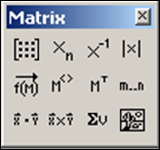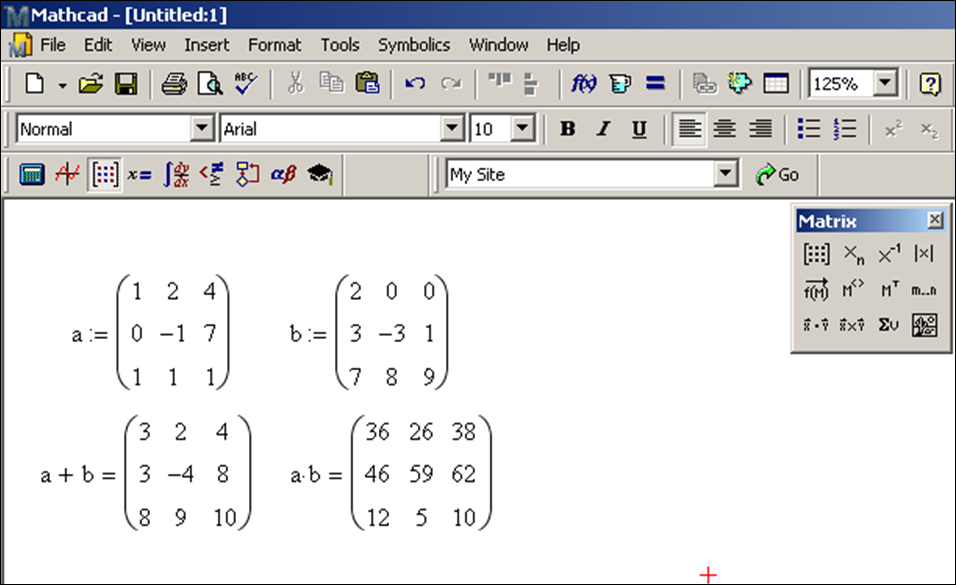14.1: Matrix Definition
- Page ID
- 14999
We begin with showing how to input a matrix into a Mathcad worksheet.
Entering matrices and basic operations
First, open the matrix toolbar with File > Toolbars > Matrix:

and select the  button in the upper left corner to launch the “Insert Matrix” dialog box:
button in the upper left corner to launch the “Insert Matrix” dialog box:

Input the desired number of rows and columns and click on “Insert”. This creates a template of the correct size that you can use for your matrix. Note that as you enter numbers in the black boxes, you can move to the next black box with the Tab key, or between the entries with the arrow keys. Let’s try an example.
Find the sum and the product of the matrices
\begin{bmatrix} 1 & 2 & 4\\ 0 & -1 & 7\\ 1 & 1 & 1 \nonumber\end{bmatrix} and \begin{bmatrix} 2 & 0 & 0\\ 3 & -3 & 1\\ 7 & 8 & 9 \nonumber\end{bmatrix}
We input the matrices and store them as variables a and b. Here we see them partially filled in:

The sum and product of the resulting matrices are done using the standard plus + and times ∗ (which appears as a dot):



